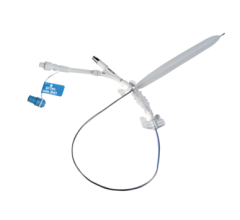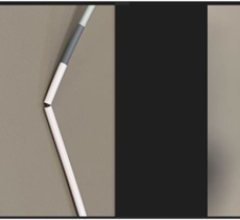
September 26, 2016 — C. R. Bard Inc. announced the U.S. Food and Drug Administration (FDA) approved an Investigational Device Exemption (IDE) supplemental application to modify the primary endpoint to a six-month time point for the Lutonix 014 Drug Coated Balloon PTA Catheter (DCB). The Lutonix 014 device is currently the only DCB in an IDE clinical trial in the United States for treatment of arteries below the knee (BTK).
The clinical trial is evaluating the device when used for the treatment of stenosis or occlusion of native BTK arteries with a cumulative lesion length up to 320 mm with reference vessel diameters of 2 to 4 mm. Currently, the study has enrolled approximately 340 patients, of which 69 percent are diabetic, 33 percent are female and 95 percent have critical limb ischemia (CLI). The primary safety end point in the study is freedom from major adverse limb event or post-operative death at 30 days and the primary efficacy end point is a composite of limb salvage and primary patency at 6 months. An independent data monitoring committee, which is chartered to review patient safety for the study, has met for the tenth time and unanimously recommended continuation of the study with no modifications.
Similar to the Lutonix 035 DCB, the first drug-coated balloon approved in the U.S., the Lutonix 014 DCB is an angioplasty balloon that is coated with a low dose of the drug paclitaxel, and also utilizes standard mechanical dilatation of the vessel to restore blood flow for patients with peripheral arterial disease (PAD). The Lutonix 035 DCB is also the only DCB being evaluated in an IDE trial for the treatment of dysfunctional arteriovenous fistulae located in the upper extremity.
PAD is estimated to be present in 3 percent of people in the age range of 40 to 59 years and in 20 percent of people over 70 years of age. The majority of patients undergoing BTK interventions suffer from CLI, with high cardiovascular risk and often significant medical co-morbidities. CLI is typically defined as limb pain that occurs at rest (Rutherford Category 4), or impending limb loss that is caused by severely compromised blood flow to the affected extremity leading to non-healing ulcers (Rutherford Category 5 and 6).
“Below-the-knee PAD is a challenging disease in a patient group that is currently under served. Patients often have to undergo frequent reinterventions following initial treatment. Regular balloon angioplasty is the primary catheter-based treatment option available today” said Michael R. Jaff, M.D., medical director of VasCore, the vascular ultrasound core laboratory used in the Lutonix BTK trial.
“A significant number of patients with BTK disease are at risk of limb loss and would be expected to benefit from alternative treatment options. The Lutonix 014 DCB could offer physicians an opportunity to change the treatment paradigm for patients by providing a safe and effective method to deliver paclitaxel directly to stenosed BTK vessels,” said Jihad Mustapha, M.D., Lutonix BTK principal investigator.
The Lutonix 014 DCB has been available commercially in Europe since 2013 and is available in most geographies outside the United States.
For more information: www.crbard.com


 June 13, 2024
June 13, 2024 








